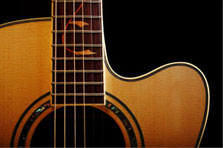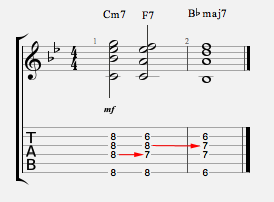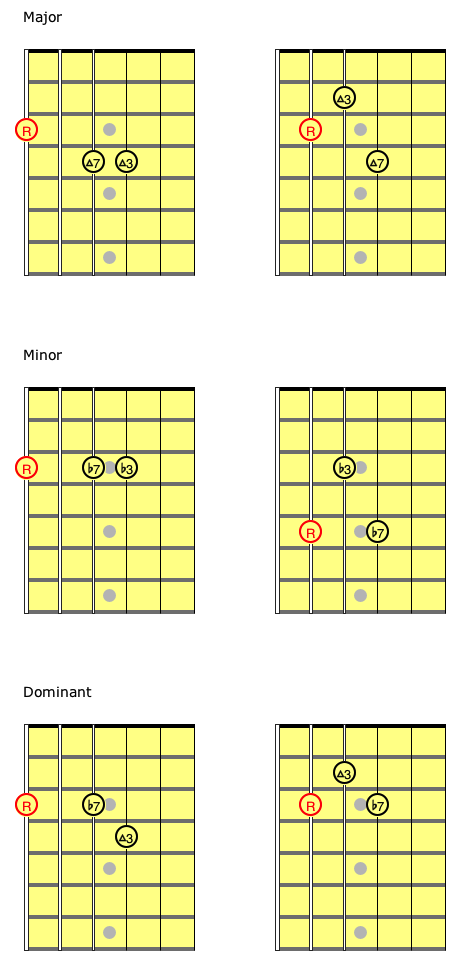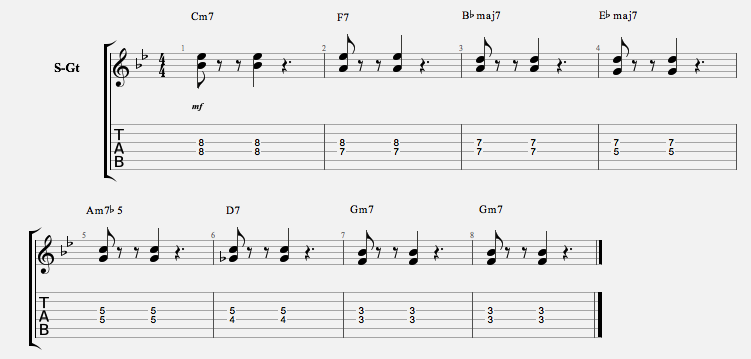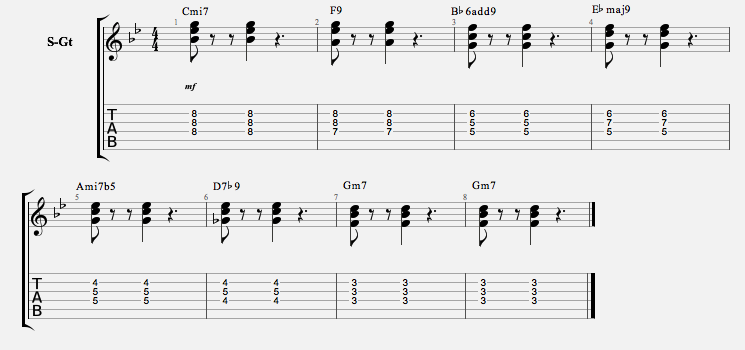
Blog
Aug 09 2015 |
Guide Tones For Jazz GuitarBy: Frank Macri Posted in: Jazz Guitar Lessons Playing through a jazz tune with alot of chord changes can sometimes become frustrating and intimidating for a player. This lesson is going to focus on the basics of guide tones and how to incorporate them into your playing. Guide tones are notes in a chord that lead toward the next chord, which are usually the third and seventh of a chord. Figure one shows a ii-V-I in the key of Bb. Examining this chord progression demonstrates how the seventh of the Cmi7 chord(Bb) leads to the third of the F7 chord(A) by a half step. The same exact pattern repeats with the next change, the seventh of F7(Eb) leads to the third of Bbmaj7(D) by a half step. Figure 1. There are three main guide tones: Major = 3 and 7 (Major Third and Major Seventh) Minor = b3 and b7 (Minor Third and Minor Seventh) Dominant = 3 and b7 (Major Third and Minor Seventh) Figure two illustrates two note voicings of the major, minor and dominant guide tones. Figure 2. Now take these two note voicings and apply it to the first section of Autumn Leaves(figure 3) in the key of Bb. Figure 3. Let’s build off of our 2-note guide tone voicings by adding a chord tone or tension on the second string. The basic rule of thumb when adding tensions, is to add notes that are diatonic to the key. Figure four is a 3-note voicing of the opening section to Autumn Leaves. Figure 4. Practice playing 2-note guide tones over a ii-V-I progression in all 12 keys. The second step would be to practice 3-note voicings over the same ii-V-I patterns and then finally pulling out the Real Book and playing standards with these concepts.
|
